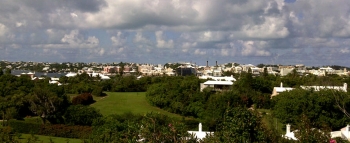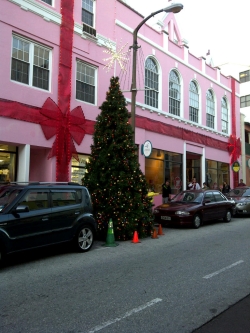one bermuda alliance and the environment
/As you know, Bermuda had a general election last week and the Opposition One Bermuda Alliance squeaked past the post to become the party forming our new government. As an urban planner, I was curious about where their 19-17 seat win would take us in terms of the environment.
Below is an extract from the OBA platform which appears under the heading “Environment” in the document More OBA Solutions.
 Reading through it, a couple of things stand out for me. First, some of these tasks the PLP government promised before, in some cases going so far as to hire consultants, only nothing actually happened. Let’s hope we are not in for a repeat.
Reading through it, a couple of things stand out for me. First, some of these tasks the PLP government promised before, in some cases going so far as to hire consultants, only nothing actually happened. Let’s hope we are not in for a repeat.
Second, other promises intend to initiate corrective actions when, frankly, the solutions are in place already. The challenge is the political and/or judicial processes within which they are undertaken. (In the case of illegal development, it is far more complex than simply pursuing people in accordance with current law. I know. I tried hard in the late nineties, when I was Assistant Director in the Department of Planning, and came away only with a bruised head.)
Glancing through the OBA platform documents generally, it is clear that authentic ‘joined up thinking’ is needed for Bermuda to be a success story. In my opinion, active recognition of the connectivity of Bermuda’s social, economic and environmental issues is crucial.
In any case, read for yourself the OBA platform on the environment.
A One Bermuda Alliance Government will protect Bermuda’s fragile environment for future generations and present-day enjoyment.
We will:
- Incorporate environmental considerations in all government decision-making.
- Support the Blue Halo initiative.
- Pursue solutions to the problems of feral animals and invasive species.
- Perform an operational review and an organizational methods review of the entire Planning process to make the Planning Department more user friendly.
- Review Special Development Orders protocols granted to the Environment Minister to ensure the process is clearly articulated, transparent and fair.
- Expand and upgrade neighbourhood parks, recreational and open green space, coastal parks and picnic areas.
- Aggressively pursue illegal developments in accordance with Bermuda's Planning laws.
- Require environment impact studies to be done on all major and unusual developments and projects.
- Promote the "Polluter Pays Principle" through proper enforcement and increases in penalties for littering, illegal dumping and other actions dangerous to the environment.
- Provide incentives for the development of brown field sites.
- Open the Southlands National Park.
- Establish a National reforestation plan, along with a national seed bank.
- Establish a White Paper for the development of Bermuda's Agricultural Industry.
- Review legislation to promote the greater use of bio-pesticides.
- Encourage a cottage industry for local produce, and support light manufacturing, agriculture, fisheries and food processing industries.
- Conduct coastal sensitivity mapping to identify risk hazards and vulnerable areas.
- Work to bring affordable hurricane insurance to fishermen.
- Establish training programmes and initiatives for the use of new technologies in fishing.


